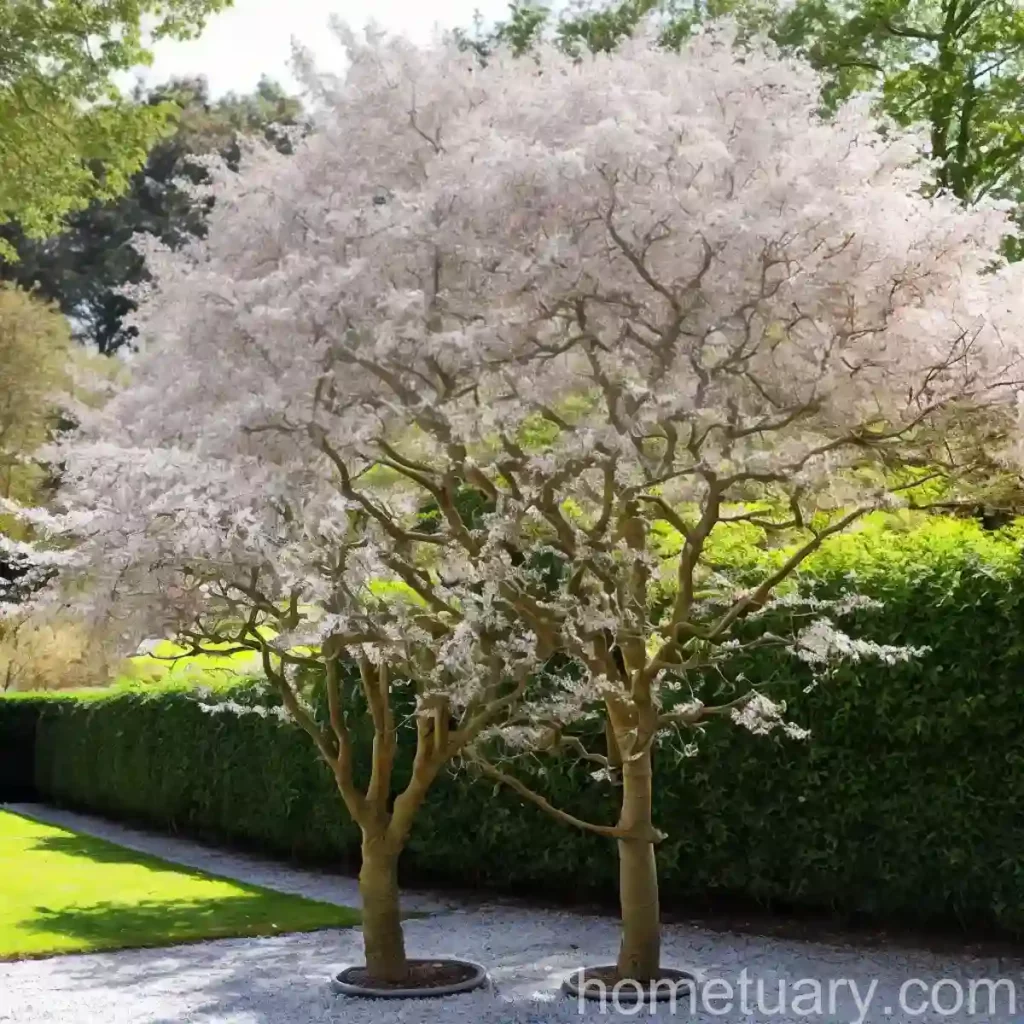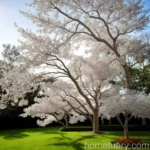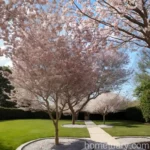European Ash (Fraxinus excelsior ‘Hessei’)
What is European Ash (Fraxinus excelsior ‘Hessei’)?
The European ash (Fraxinus excelsior ‘Hessei’) is a unique cultivated variety of the European ash tree (Fraxinus excelsior) that is prized for its ornamental qualities. This deciduous tree is known for its striking canopy and distinctive bark. The ‘Hessei’ cultivar is particularly valued for its compact size, making it an excellent choice for urban landscapes and small gardens. In this comprehensive guide, we will explore the key characteristics and optimal care techniques for the European ash (Fraxinus excelsior ‘Hessei’).
Key Takeaways – European Ash (Fraxinus excelsior ‘Hessei’)
- Scientific Name: Fraxinus excelsior ‘Hessei’
- Common Name: European Ash
- Type: Deciduous tree
- Mature Height: 15-20 feet
- Mature Spread: 10-15 feet
- Growth Rate: Fast
- Preferred Soil pH: Neutral to slightly acidic (pH 6.0-7.0)
- Hardiness Zone: 4-7
- Watering Needs: Moderate
- Sunlight Requirements: Full sun to partial shade
- Special Features: Compact size, ornamental bark, beautiful canopy
Now, let’s delve into the specific care requirements and characteristics of the European ash (Fraxinus excelsior ‘Hessei’).
Culture
The European ash (Fraxinus excelsior ‘Hessei’) is a versatile and resilient tree that thrives in various environments. Proper cultural practices are essential for the optimal growth and development of this beautiful tree.
Uses
The ‘Hessei’ cultivar of the European ash tree offers several valuable uses in landscaping and horticulture:
- Ornamental Tree: The compact size and attractive foliage make it an excellent choice for ornamental plantings in small gardens and urban landscapes.
- Shade Tree: The broad canopy provides ample shade, making it an ideal tree for outdoor seating areas and patios.
- Wildlife Habitat: The European ash tree supports various wildlife species, including birds and insects, adding ecological value to garden landscapes.
Water
The European ash (Fraxinus excelsior ‘Hessei’) has moderate water needs, especially during its initial establishment phase. Adequate watering is essential to ensure the development of a healthy root system. Once established, the tree exhibits good drought tolerance, making it suitable for regions with sporadic rainfall.
- Watering Guidelines:
- Young Trees: In the first year, provide 1-2 inches of water per week, ensuring the soil remains moist but not waterlogged.
- Mature Trees: Once established, water deeply during prolonged dry spells, providing approximately 1 inch of water every 7-10 days.
Sunlight
Proper sunlight exposure is crucial for the health and vigor of the European ash (Fraxinus excelsior ‘Hessei’). The tree thrives in full sun to partial shade conditions.
- Sunlight Requirements:
- Full Sun: Ideally, the tree should receive at least 6-8 hours of direct sunlight daily for optimal growth.
- Partial Shade: While the European ash can tolerate partial shade, it flourishes best in full sun exposure.
Fertilizer
Regular fertilization can significantly enhance the growth and blooming of the European ash (Fraxinus excelsior ‘Hessei’). A balanced fertilizer formulated for trees and shrubs should be applied during the tree’s active growing season.
- Fertilization Guidelines:
- Timing: Apply a complete, slow-release fertilizer in early spring before the onset of new growth.
- Application Rate: Follow the manufacturer’s instructions regarding the application rate based on the tree’s size and age.
Soil
The European ash (Fraxinus excelsior ‘Hessei’) thrives in well-draining soil with a slightly acidic to neutral pH. It adapts well to various soil types, including loamy, sandy, and clay soils.
- Soil Preferences:
- pH Level: The ideal soil pH for European ash trees ranges from 6.0 to 7.0.
- Drainage: Well-draining soil is essential to prevent waterlogging, which can lead to root rot and other issues.
- Soil Type: While the tree is adaptable, loamy soils rich in organic matter are particularly favorable for robust growth.
Pruning
Pruning plays a vital role in maintaining the health, shape, and structural integrity of the European ash (Fraxinus excelsior ‘Hessei’). Proper pruning techniques ensure the tree’s long-term vitality and aesthetic appeal.
- Pruning Guidelines:
- Timing: Prune the tree during the dormant season in late winter or early spring before new growth emerges.
- Objective: Focus on removing dead, damaged, or diseased branches, as well as any crossing or crowded growth to encourage proper airflow and sunlight penetration.
- Pruning Best Practices: Use sanitized pruning tools to make clean cuts, avoiding excessive pruning that can stress the tree.
Propagation
The propagation of the European ash (Fraxinus excelsior ‘Hessei’) can be achieved through several methods, including seeds, cuttings, and grafting.
- Propagation Techniques:
- Seeds: Collect mature seeds from the tree and sow them in well-draining seed-starting mix. Germination may take several weeks, and the resulting seedlings may exhibit variability in traits.
- Cuttings: Select semi-hardwood cuttings in early summer and root them in a favorable propagation medium with adequate moisture and warmth.
- Grafting: Utilize the cleft grafting or dormant grafting method with desirable rootstock to propagate the ‘Hessei’ cultivar while ensuring genetic uniformity.
Container Popularity
The compact size and ornamental attributes of the European ash (Fraxinus excelsior ‘Hessei’) make it increasingly popular for container cultivation. The following factors contribute to its container popularity:
- Space Efficiency: Ideal for small gardens, balconies, and urban spaces where limited outdoor space is available.
- Aesthetic Appeal: The tree’s graceful canopy and attractive bark add visual interest to container plantings, enhancing outdoor living areas and patio spaces.
- Adaptability: With proper care, container-grown European ash trees thrive in a controlled environment, making them suitable for urban gardening and landscape design.
Container Common Diseases
While the European ash (Fraxinus excelsior ‘Hessei’) is relatively resistant to many common ash tree diseases, certain issues may still arise, especially when the tree is under stress or growing in suboptimal conditions.
Disease Diagnosis
It is essential to promptly diagnose and address any signs of disease to maintain the tree’s health and vigor. Common diseases that may affect the European ash ‘Hessei’ include:
- Ash Dieback (Hymenoscyphus fraxineus): This devastating fungal disease can lead to dieback of the tree’s branches and foliage, affecting its overall vitality.
- Anthracnose: Characterized by leaf spots, wilting, and defoliation, anthracnose can impact the visual appeal and vigor of the tree.
Common Pests
The European ash (Fraxinus excelsior ‘Hessei’) may encounter certain pests that can affect its growth and appearance. Vigilance and proactive pest management practices are crucial in preserving the tree’s well-being.
- Emerald Ash Borer (Agrilus planipennis): This destructive insect poses a significant threat to ash trees, including the European ash, by tunneling into the tree’s bark and disrupting its vascular system.
- Ash Flower Gall Mite (Eriophyes fraxinivorus): Infestations by this microscopic mite can cause abnormal growths, or galls, on the tree’s flowers, impacting its visual appeal.
Botanist’s Tips
As a plant scientist with a passion for trees and horticulture, I offer the following tips for the successful care and cultivation of the European ash (Fraxinus excelsior ‘Hessei’):
- Soil Preparation: Prior to planting, amend the soil with organic matter to enhance its structure and fertility.
- Mulching: Apply a 2-3 inch layer of organic mulch around the tree, keeping it several inches away from the trunk to conserve soil moisture and suppress weed growth.
- Monitoring and Observation: Regularly inspect the tree for signs of pests, diseases, and environmental stress, taking proactive measures when necessary to maintain its health.
- Seasonal Care: Adapt the tree’s care practices based on seasonal changes, providing appropriate watering, fertilization, and protection from extreme weather conditions.
Fun Facts
Uncover intriguing facts and tidbits about the European ash (Fraxinus excelsior ‘Hessei’):
- The ‘Hessei’ cultivar is named after the renowned German nurseryman, Johannes Hesse, who propagated and introduced the unique variety.
- The distinctively flaky bark of the European ash ‘Hessei’ adds textural interest to winter landscapes, showcasing its year-round appeal.
- In folklore and traditional medicine, various parts of the ash tree have been associated with symbolic meanings and medicinal uses, reflecting the cultural significance of this revered species.
Links to External Resources
Expand your knowledge and exploration of the European ash (Fraxinus excelsior ‘Hessei’) through the following reputable external resources:
- Royal Horticultural Society: Fraxinus excelsior ‘Hessei’
- Missouri Botanical Garden: Fraxinus excelsior ‘Hessei’
- Arboretum Wespelaar: European Ash Collection
In conclusion, the European ash (Fraxinus excelsior ‘Hessei’) exemplifies the captivating beauty and intrinsic value of trees in horticulture and urban landscapes. By understanding and implementing the optimal care practices outlined in this comprehensive guide, you can cultivate and appreciate the enduring charm of this distinguished ash tree cultivar.
References
Royal Horticultural Society. “Fraxinus excelsior ‘Hessei’.” RHS Gardening, Royal Horticultural Society, www.rhs.org.uk/Plants/94778/i-Fraxinus-excelsior-i-Hessei/Details.
Missouri Botanical Garden. “Fraxinus excelsior ‘Hessei’.” Missouri Botanical Garden, www.missouribotanicalgarden.org/PlantFinder/PlantFinderDetails.aspx?taxonid=269781&isprofile=0&.
Arboretum Wespelaar. “European Ash Collection.” Arboretum Wespelaar, www.arboretumwespelaar.be/index.php/fr/collection-en-ligne/search?layout=edit&id=407.















